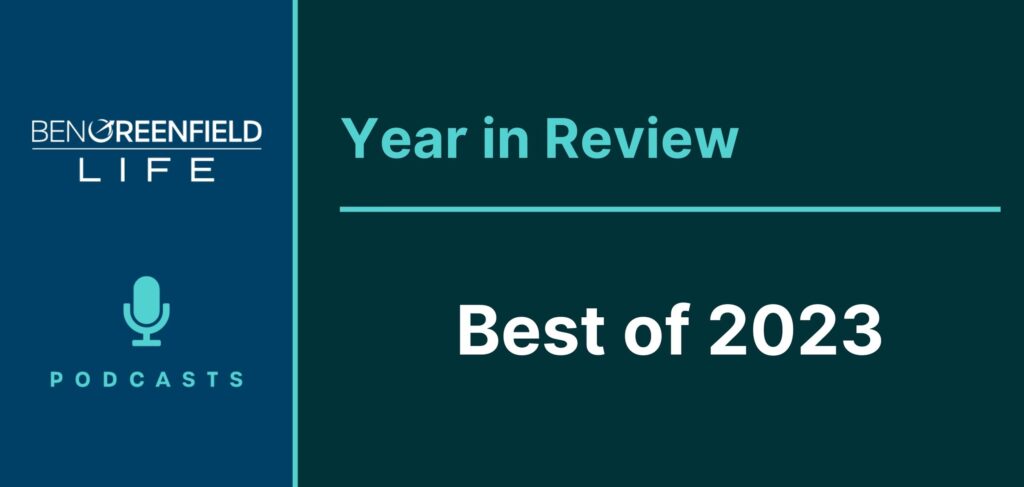March 19, 2019
As you can read in my articles “Four New, Cutting-Edge Ways To Easily Shift Your Body Into Fat-Burning Mode & Ketosis” and “How To Use Ketones For Longevity, How I Personally Use Ketone Salts & A New Chemical-Free, Clean Way To Get Into Ketosis,” I have a long history of experimentation with a ketogenic diet – dating all the way back to 2012.
In this article, I'm going to give you an overview of several of the problematic issues I've discovered many people experience on a ketogenic diet, compare and contrast a carnivore diet with ketosis, and also give you as many tips as I possibly can about how to do a ketotic or a carnivore diet “the right way” based on my own personal experience and research.
Feel free to leave your questions, comments, and feedback below this post! I'm open to any and all thoughts, criticisms, feedback or additional ideas that could be helpful to others.
Why Ketosis Isn't For Everyone
When you think about it, our ancestors, along with many Blue Zones and hunter-gatherer tribes, were often in a state of ketosis. However, they achieved it via natural habits such as frequent fasting, low intake of processed foods full of starch or sugar, high plant intake, and “drowning” real, whole food with healthy compounds such as extra virgin olive oil. This stands in stark contrast to the modern, somewhat bastardized version of ketosis that involves buying ketone supplements that cost $15 a serving, eating ungodly amounts of butter, coconut oil, and other saturated fats, and spending several precious minutes each day hunched over a blood or breath ketone monitor.
Fact is, many people have problems metabolizing and utilizing fat that isn’t related to clinical conditions or missing nutrients but are instead the result of variations in the genes that encode for fat metabolism. If you have one of the following three genetic characteristics, you may not respond well to a high-fat or ketogenic diet. Indeed, you may not benefit from a constant state of ketosis at all – especially one achieved not by fasting and sugar restriction but by high fat intake – and you may instead perform better on a low-fat diet or a diet comprised primarily of Mediterranean-based fats and non-saturated fats.
1. Poor Alpha-Linolenic Avid Conversion
Alpha-linolenic acid (ALA) is a short-chain omega-3 fatty acid found primarily in plant-based food sources, such as flax, walnuts and other seeds and nuts. ALA is an essential fatty acid because, similar to essential amino acids, it cannot be produced in the body, so it must be obtained through food. Plant sources of ALA are popular among vegetarian- and vegan-diet enthusiasts because once in the body, ALA can be synthesized into DHA and EPA, critical fatty acids that enhance cognition and brain health and help stabilize a state of ketosis. But research suggests that only 2% to 10% of all ALA consumed is actually converted into DHA or EPA. In addition, the expression of ALA-converting genes, known as FADS, can vary widely. One variant of the FADS gene increases conversion, while another reduces conversion, resulting in some people having a worsened ability to make effective conversion compared to those with the conversion-increasing variant.
The FADS variant that improves ALA conversion is most common in African, Indian, Pakistani, Bangladeshi and Sri Lankan populations. It is moderately common in European populations (although there is also variation across European populations, with the conversion-increasing variant being most common in Southern European populations) and least common in Native Americans and indigenous Arctic populations.
This variation is likely due to the relative availability of plant sources of omega-3s and genetic adaptations to that availability. The more a population relied upon plant sources of fatty acids, the more the population probably adapted to convert ALA into usable DHA and EPA. The more a population consumed DHA and EPA directly from animal and marine sources, the more the conversion-increasing variant was replaced by the conversion-decreasing variant.
So if you have, say, African or Southeast-Asian ancestry, you likely carry the conversion-increasing variant of the FADS gene and don’t need to consume as much DHA and EPA from animal or fish sources. It is important to note that this doesn’t mean you don’t need to consume animal or fish sources at all, but that you simply don’t need them as much as people of other ancestral heritages.
If you have Far Northern European, Iberian, Native American or indigenous Arctic ancestry, you most likely can’t effectively convert ALA into usable DHA and EPA. Those of British and Northern European ancestry may be able to make effective conversion, but the conversion-increasing variant is not as common as in Tuscan and Southern European populations. If your genetic heritage comes from these people groups, you need to get your DHA and EPA directly from meat and fish.
2. Upregulated Elongation Of Omega-6 Fatty Acids
Omega-6 fatty acids are, like omega-3s, polyunsaturated fatty acids and are found most commonly in poultry, eggs, grains, seeds, nuts, and most vegetable oils. Omega-6s such as linoleic acid act as precursors to molecules called eicosanoids, which, when derived from omega-6s, can be proinflammatory, especially when consumed in excess. While eicosanoids derived from omega-3 fatty acids are anti-inflammatory, humans cannot efficiently convert omega-6s into omega-3s, so a high intake of omega-6 fatty acids without a proportionally high intake of omega-3s can lead to rampant cellular inflammation and weight gain.
But even if you do consume adequate omega-3 fatty acids (a balanced ratio of omega-3s-to-omega-6s is 1-to-1), you may not be able to handle omega-6s as well as other people. The process of converting omega-6s into inflammatory compounds is called elongation. The expression of the gene responsible for elongation varies from person to person, and some people have upregulated elongation that results in a greater conversion of omega-6s, specifically linoleic acid, into inflammatory compounds. If you have upregulated elongation, a significant amount of the linoleic acid you consume (linoleic acid is found in seeds and nuts) will be converted into arachidonic acid, a precursor to inflammatory compounds.
To avoid that inflammation, you will need to eliminate common ketogenic diet fat sources such as poultry, eggs, and nut butters, or, if you do consume them, increase your intake of omega-3 fatty acids from fatty, cold-water fish like tuna, mackerel, herring, and sardines.
You can determine the status of your omega-6 elongation with an omega-3 and omega-6 fatty acid index test, which tells you whether you have excess inflammatory arachidonic acid levels. Tests offered by companies such as WellnessFX and Quest Diagnostics can help to determine this for you.
3. The Thrifty Gene Hypothesis: FTO & PPAR Variants
The geneticist James Neel proposed the Thrifty Gene Hypothesis in 1962 in an attempt to explain why certain populations are susceptible to type 2 diabetes. The hypothesis has also been used to explain why humans tend to accumulate fat mass by claiming that in the past, thrifty genes allowed humans to build fat reserves as a buffer against leaner times in a type of long-term feast-famine cycle (you can learn more about feast-famine cycles in my podcast with Dr. Dan Pompa).
As food became overabundant in the modern era, these genes continued to allow humans to build fat reserves but quickly led to a pandemic of obesity since the foods responsible for triggering the thrifty genes are consumed in much higher quantities today than they have been in the past.
Granted, this hypothesis has received much criticism over the last few decades, and even Neel himself found some evidence that suggested the hypothesis may not be accurate. But there are indeed certain genes that cause some people to gain fat more easily than others, especially in response to high-fat foods.
The most common nutrients associated with genetic obesity are fatty acids (you will learn which ones in a moment), and the two most notorious genes responsible for storing these fatty acids are the FTO and PPAR-gamma genes.
The FTO (fat mass and obesity-associated protein) gene is responsible for regulating fat mass and overall body weight. Research suggests that the FTO gene is the primary genetic factor associated with weight gain and that diet is the primary environmental factor that triggers the FTO gene. A high saturated fat intake is particularly associated with FTO-induced weight gain, so if you carry either one or two copies of the FTO rs9939609 polymorphism, you will likely do better on a diet low in saturated fat, particularly from dairy, butter, coconut oil and fatty beef, lamb and pork.
The PPAR (peroxisome proliferator-activated receptor) gene is also associated with weight gain following a high fat intake. The PPAR-gamma polymorphism is responsible for regulating fatty acid storage, the uptake of fatty acids and the growth of new fat cells. A variant of the PPAR-gamma gene has shown significant interactions with dietary fat and monounsaturated fatty acid intake on BMI and weight change, suggesting that the PPAR-gamma gene is one of the primary genes responsible for causing weight gain. Polyunsaturated fatty acids, such as the omega-6 arachidonic acid, also activate PPAR-gamma, so if you are a PPAR-gamma possessor (instead of, say, a PPAR-alpha possessor), you will probably achieve greater dietary success by limiting your intake of fats.
What does this all mean? If you have the FTO rs9939609 polymorphism or the PPAR-gamma gene, you probably do better on lower-fat diets. You can find out if you possess either of these gene variants by taking a 23andMe genetic test, then simply searching for these gene variants when you scroll through your raw results. There is a growing body of websites such as DNAFit and Promethease that can make digging through this data a bit easier.
The Potential Problems With A Ketogenic Diet
As you learned above, while achieving ketosis via high saturated fat intake and high fat intake in general may not be an option for people with poor ALA conversion, hypercholesterolemia or upregulated elongation of omega-6 fatty acids, ketosis can indeed be an effective method for enhancing focus, boosting physical and mental energy and improving physical performance.
But even for people who do respond well to a carbohydrate-restricted or fat-rich diet, it is easy to make mistakes that may prevent you from entering a state of ketosis, cause you to accumulate nutrient deficits, and give you low, sluggish energy (particularly during workouts) on a strict ketogenic diet.
In particular, two main issues often arise on a ketogenic diet. The first problem is the loss of key nutrients, such as phytochemicals, antioxidants, fiber, and plant-based vitamins. For example, the phytochemicals contained in kale, spinach, blueberries, raspberries, collard greens, Swiss chard, and sweet potatoes are responsible for a phenomenon called “xenohormesis.” Hormesis is a common biological reaction in which exposure to low doses of compounds that could be toxic or lethal in higher doses results in a beneficial effect, such as improved health, muscle growth or longevity.
Eliminating these phytochemicals from your diet means that you may not enjoy these benefits. These same plants are sources of antioxidants that are crucial for neutralizing the excess free radicals that can cause a host of physiological and neurological problems, including neurodegeneration and damage to muscle tissue. Vegetables and fruits are some of the densest sources of a full spectrum of antioxidants you can consume, and also include – especially compared to butter, coconut oil and hefty cuts of fat-streaked meat – fiber.
Fiber is important for satiety, maintaining healthy digestive function, and feeding robust populations of beneficial gut bacteria (although paradoxically, in people with compromised guts, fiber can actually increase issues such as gas, bloating, and constipation).
Finally, plants are potent sources of a wide range of vitamins, minerals, and micronutrients, including Vitamin A, Vitamin C, the B-Vitamin complex, Calcium, Potassium, and Iron. While some vegetables, particularly starchy tubers like sweet potatoes and white potatoes and overly sweet fruits like bananas and apples, are too high in carbohydrates to be strictly keto-friendly, most vegetables, such as dark leafy greens and cruciferous vegetables, are keto-friendly and can be consumed in relatively high quantities.
Of course, one wrench thrown into this equation is the potential for other hormetic stressors such as exercise, cold thermogenesis, sauna, sunlight radiation, and even the heterocyclic amines and other charred compounds formed during the cooking of meat may allow for adequate hormesis even in the absence of high plant intake, a theory proposed by my podcast guest Dr. Paul Saladino in our carnivore diet episode. However, there is very little long-term research on the hormetic effect of a plant-based diet vs. a carnivore diet.
The second problem that can accompany a low-carb diet is a cluster of symptoms known collectively as the “keto flu,” also known as carbohydrate withdrawal. Keto flu can manifest as:
- Brain fog
- Headaches
- Chills
- Sore throat
- Confusion
- Dizziness
- Insomnia
- Irritability
- Muscle soreness
- Nausea
- Poor focus
- Stomach pains
- Sugar cravings
Keto flu typically begins 24 to 48 hours into a ketogenic diet and can last from a few days to several weeks. The flu is caused by three changes that can occur as your body shifts from glucose metabolism to fatty acid metabolism.
1. Water & Sodium Flush
As you cut out carbohydrates, your insulin levels drop. This signals your kidneys to flush sodium out of your body, which can result in up to 10 pounds of water-weight loss in just a few days. The accompanying loss of muscle glycogen and minerals, along with low insulin levels, can cause dizziness, nausea, headaches, muscle cramping, diarrhea, and constipation.
2. Low Thyroid Hormones Levels
The hormones T3 and T4 are produced by the thyroid gland and regulate body temperature, metabolism, and heart rate. Thyroid function relies heavily upon adequate carbohydrate intake, so as you cut back on carbohydrates, levels of T3 and T4 may fall, resulting in brain fog and fatigue.
3. Increased Cortisol Levels
At the same time as your T3 and T4 hormone levels fall, your cortisol levels can rise. This is because extreme carbohydrate restriction signals to your body that glucose is a precious commodity, and your body responds by attempting to increase glucose levels via increased levels of stress hormones like cortisol. This can result in irritability and insomnia.
How To Do A Ketogenic Diet The Right Way
So how can you beat these nutritional deficiencies and carbohydrate withdrawal symptoms? The following are seven tactics for getting the most out of a low-carb, ketogenic diet without experiencing significant reductions in physical or cognitive performance.
1. Consume Veggies & Take Supplements
As mentioned above, most vegetables are keto-friendly. There is no reason you can’t liberally consume kale, collard greens, Brussels sprouts, and Swiss chard and moderately consume low-glycemic index fruits such as blueberries, raspberries, and blackberries. You can also supplement the phytochemicals, antioxidants, and fiber you get from these whole-foods sources via prebiotics, probiotics and antioxidants like GSH (Glutathione) and turmeric extract (Curcumin), along with a quality multivitamin.
Interestingly, microgreens, which are the shoots of salad vegetables such as arugula, Swiss chard, mustard, beetroot, etc., picked just after the first leaves have developed, can help modulate cholesterol levels and lower inflammation. Microgreens are very simple to grow at home in a sunny window or under a LED grow light.
In addition to high vegetable and microgreen intake, you should also consider consuming the following supplements:
- Choline, which helps your liver process fat and prevents non-alcoholic fatty liver disease.
Magnesium, which improves bone health, immune system function, and nerve and muscle function. It also helps minimize muscle cramps, dizziness, and fatigue. - Potassium, which is necessary for proper cellular function (you can also get potassium from avocados and dark leafy greens). It also minimizes cramps, constipation and muscle weakness.
- Sodium, which, as mentioned above, is dumped by your kidneys as insulin levels drop. If you are performing heavy training sessions, you need to maintain sodium levels since you lose a lot of sodium through sweat. Sodium also reduces fatigue, headaches, and thirst.
- Creatine, which will allow you to perform high-volume, high-intensity workouts without relying on high levels of muscle glycogen (since these stores will be depleted as you restrict carbohydrate intake). This is known as a carbohydrate-sparing effect.
2. Consume More Fat, Especially MCT Oil
Consuming more of the right types of fat may accelerate your adaptation to a ketogenic diet. MCT (medium-chain triglyceride) oil, which is derived from coconut oil, is particularly potent. Most fatty acids must travel through your lymphatic system to your heart, muscles and adipose tissue before entering the liver to be metabolized. But MCT oil goes straight to the liver to be immediately metabolized into energy, and this addition alone can allow many to avoid the keto flu altogether.
You can also add coconut oil to your morning coffee and eat more fat-rich foods, such as grass-fed beef, fatty, coldwater fish and eggs. Extra virgin olive oil, coconut oil, and MCT oil can also be drizzled liberally on almost any dish. Just remember to include plants too, as these can eliminate the potential for high intake of oils (particularly saturated fats) to become inflammatory.
3. Get Good Sleep
Sleep helps to regulate levels of cortisol, which, as you learned above, rise as levels of thyroid hormones drop in response to carbohydrate restriction. As you sleep, levels of the fat-burning hormones leptin and adiponectin rise, which further stabilizes appetite and improves your adaptation to a fat-based diet. Review my last big article on sleep for recommendations on figuring out how much sleep you need each night as well as how to optimize that sleep.
4. Perform Light Exercise For A Few Days
Hard exercise elevates levels of cortisol, which are already elevated from the process of adapting to a ketogenic diet. Since excessively elevated cortisol levels can signal insulin to shovel the food you eat into fat cells (which is the opposite effect of what you want to achieve with a ketogenic diet), until you adapt to burning fat, perform lighter exercise sessions.
Do some yoga, hit the sauna, go for a swim or paddleboard session, or embark upon an easy sunshine walk or hike. Incidentally, if you perform this activity in a fasted state before eating breakfast, it will boost your fat-burning capacities even more and make your shift into ketosis go more smoothly. Listen to my podcast, “The Benefits Of Fasted Exercise, Busting the Myth of the Pre and Post Workout Meal, Who Shouldn’t Fast & Much More!” for more information on fasted exercise.
While you don’t want to overdo any hard exercise sessions, lifting heavy weights can help prevent loss of muscle during a high-fat, lower-protein ketogenic diet. Lifting weights will send signals to your muscles to enter an anabolic, muscle-building state without taking you out of ketosis. Ideally, these initial weight lifting sessions should not be high-rep or voluminous, but instead short and intense.
5. Take Activated Charcoal
Adipose tissue can act as a storage depot for toxins like molds, BPA and pesticides. As you burn stored body fat during a ketogenic diet, these toxins can be released back into your bloodstream and, if left alone, can be reabsorbed into more sensitive tissues like the brain and other vital organs. Consuming activated charcoal, which binds to toxins, will help your body flush these toxins out.
6. Take Exogenous Ketone Supplements
Exogenous ketones are simply ketones, such as ketone salts and ketone esters, that are naturally produced by your body but that you can also exogenously mainline into your body from supplements. They can help reduce fatigue and boost energy by quickly raising ketone levels in your blood. While exogenous ketones aren’t a replacement for a true state of ketosis, they can help you get through the keto flu during the first few days or weeks of a carbohydrate-restricted diet. A few of my favorite ketones include HVMN ketone esters, KetoneAid ketone esters, Real Ketones ketone salts, and PerfectKeto keto salts.
7. Implement A Cyclic Ketogenic Approach
Unless you have a legitimate health condition, such as a neurodegenerative condition, that you are treating with a ketogenic diet, you don’t necessarily need to stay in an indefinite state of ketosis. Occasional and even regular dips into ketosis via strategies like fasting, occasional carbohydrate re-feeds and carb-cycling are sufficient for providing the benefits of a ketogenic diet without requiring you to eliminate carbs for months at a time.
While you can, especially if you’re aren’t a hard-charging athlete, certainly remain in a state of ketosis for years at a time without experiencing any adverse effects (assuming you follow many of the rules you have just read about), you can also get the same benefits by performing brief, frequent forays into ketosis. For example, you can consume all of your carbohydrates at the end of each day, especially if you perform a hard exercise session late in the afternoon or early evening.
This exercise session will ensure you are highly sensitive to glucose so that the glucose you do eat is stored as muscle glycogen. If you fast for 12 to 16 hours after this meal, you will still be able to enjoy the fat-burning and brain-boosting benefits of ketosis without depleting your energy. Many of my athletic clients perform daily evening carb re-feeds of up to 200 grams of carbohydrates, then spend the remainder of their time in ketosis. Most of my other clients perform at least a weekly carb re-feed, typically on their most physically active day of the week so that they reduce any excess glucose response.
What About The Carnivore Diet?
Finally, since, at the time of this writing, the carnivore diet is incredibly popular and I just recorded a highly informative podcast on it, I would be remiss not to address it. The carnivore diet falls into the same general category as the ketogenic diet since it is a very low carbohydrate protocol that can potentially set you up for many of the same deficits or issues people experience when going keto. The difference between a carnivore diet and a ketogenic diet is that although a carnivore diet can (and based on what you read below should) be ketogenic, it is higher in protein, and lower or absent in many of the common staples of a ketogenic diet, such as butter, coconut oil, seeds, nuts, plant-based oils, etc.
On a strict carnivore diet, one eats only meat (preferably nose-to-tail), fish, water and little else, although some variations allow for animal-derived foods such as butter, dairy, and eggs. So breakfast might be a cut of wild salmon, lunch a large ribeye, and dinner a serving of a rack of lamb.
However, if you eat exclusively meat, you may disrupt your microbiome, particularly via a shortage of the short-chain fatty acids (SCFAs) called butyrate, which your gut bacteria use as fuel to maintain the integrity of the intestinal wall. Research has indeed shown that an all-meat diet can lead to SCFA deficits. In addition, an interesting study found that cheetahs are able to ferment collagen from bones and chicken cartilage into SCFAs, and the same may be possible for humans on a carnivore diet who make sure to include bone broth, bone marrow and other cartilaginous sources, such as many of the newer bone broth powders with added cartilage, in their diet. Many of the benefits of fiber are attributable to its fermentation by bacteria which produce SCFAs in the colon, especially one called butyrate.
However, it turns out that SCFA has metabolic properties that are very similar to those of beta-hydroxybutyrate ketones (BOHB). In the presence of low carbohydrate intake, the internal production of BOHB by the liver may reduce or eliminate the need for butyrate produced from a higher fiber diet, which can be especially good news for people who experience gas, bloating or other gastrointestinal distress from a high consumption of seeds, nuts, grains or vegetables (particularly roughage and raw veggies). Therefore, a well-formulated ketogenic or low-carbohydrate carnivore diet may provide many of the benefits of fiber, without a high carbohydrate intake and the associated unpleasant side effects that some people experience from high fiber intake.
In other words, if you are in nutritional ketosis from a ketotic diet or a low-carb carnivore diet, it may not be necessary to consume a high fiber diet to achieve the health effects attributed to fiber.
Since red meat is also quite high in the amino acids cysteine, tryptophan and methionine, which can be pro-cancer and pro-aging in excess, anyone on the carnivore diet should also prioritize getting adequate glycine, proline and hydroxyproline, all of which can balance out the other amino acids and also further support a strong gut lining. This is another good reason to include bone broth, collagen, glycine, essential amino acids, and organ meats as they are high in these particular amino acids.
Finally, due to the low intake of plant matter, the carnivore diet tends to be low in vitamins C and E, and if dairy is not included, also vitamin K2 and calcium. If organ meats aren’t consumed on a carnivore diet, it also becomes low in Vitamin A, folate, manganese and magnesium, which are crucial compounds for normal, healthy metabolic function.
Many of the other problematic points made above about the keto diet also apply to the carnivore diet. In reality, it is very rare to find a long-lived, healthy population who subsists entirely on meat, especially muscle meat. For example, several Asian, Latin American and African tribal cultures actually consume the intestines of ruminant animals like goats, sheep, deer, and cows, all of which contain high amounts of the vegetables and fiber those animals consumed, a literal stomach salad! These include dishes such as the Spanish zarajos, the Filipino dinuguan, the Korean gop chang, and the Latin American chinchulines.
Many argue of the existence of carnivorous ancestral populations. While it’s true that many of our ancestors thrived on large quantities of animal products, every single one of the commonly cited carnivorous groups also took significant advantage of plant foods. For example:
- The nomads of Mongolia ate plenty of meat and dairy products, but consumed wild onions and garlic, tubers and roots, seeds, and berries.
- Gaucho Brazilians consumed mostly beef, but also supplemented their diet with yerba mate, a tea rich in vitamins, minerals, and phytonutrients.
- The Maasai, Rendille, and Samburu tribes of East Africa primarily consumed meat, milk, and blood, but also occasionally consumed herbs and tree barks. Women and older men in these communities consumed ample amounts of fruit, tubers, and honey.
- The Russian Arctic Chukotka thrived on fish, caribou, and marine animals but always paired these animal foods with local roots, leafy greens, berries, or seaweed.
- The Sioux of South Dakota ate large amounts of buffalo, but also consumed wild fruit, nuts, and seeds that they came across as they hunted the buffalo herds.
- The Canadian Inuit subsisted primarily on walrus, whale meat, seal, and fish, but also foraged wild berries, lichens, and sea vegetables and even fermented many of these plant foods as a preservation method.
Granted, one could argue that many of these populations turned to these plants as survival food and that they – and modern humans – could thrive on eating animals nose-to-tail, along with fish, in the absence of such plant matter. However, this may not be sustainable for the planet, accessible to many people, or enjoyable (since it would require getting rid of a rich, tasty and satisfying tradition of consuming plant compounds such as coffee, red wine, sourdough bread, sweet potato fries, beet salad with goat cheese or any of your other favorite foods that are plant derived).
Finally, researcher Richard Wrangham hypothesizes and presents good evidence that the relatively large brain and small gut of the human didn’t happen from eating more meat (which the carnivore diet enthusiasts propose) but from eating more starchy underground storage organs, such as tubers and root vegetables.
In a nutshell, all things considered, if I were to eat a carnivore diet, I would highly consider not only eat nose-to-tail, organ meats, bone marrow, and bone broth, but I would also add:
- Small amounts of root vegetables and tubers, along with pureed, mashed or canned pumpkin and sweet potato purees, preferably skipping the skin of these compounds and any excess fiber.
- Homemade fermented yogurt made from coconut milk and L. Reuteri strain probiotic (click here for the recent weekly roundup in which I featured this recipe).
- Raw, organic honey as a sweetener.
- Small anti-oxidant rich, low sugar berries such as blueberries, lingonberries, bilberries, and blackberries.
- Bitter and tannin-rich teas and organic coffee.
- Wild caught salmon roe
- Seeds and nuts, if tolerated by the gut and prepared via ancestral practices of soaking, fermenting or sprouting.
- Nutrient dense vegetable powders that offer plenty of phytonutrients without excess roughage and fiber, such as Dr. Thomas Cowan’s heirloom vegetable powders. (Code: BEN)
- 12-16 hour daily intermittent fast to ensure that mTor pathways aren’t excessively activated.
- Consumption of my friend Dr. Joseph Mercola’s “autophagy tea” before my nightly fast to also limit mTor activation and increase autophagy (1 tsp Pau d’ Arco powdered tea, ½ tsp hydroxycitrate and garcinia (HCA/Garcinia powder), ½ tsp quercetin powder, ½ tsp glycine powder, ½ teaspoon chamomile powder).
Summary
There's no doubt that there are folks out there who have achieved remarkable results from both the ketogenic and carnivore diets. Reported benefits include everything from weight loss to balancing blood sugar, increasing satiety, treating migraines, quelling inflammation and beyond.
However, when not approached carefully, both diets can wind up causing more harm than good. Just check out my podcast “Why A High-Fat, Ketogenic Diet Chock Full Of Saturated Fat, Coconut Oil & Butter Could Be Destroying Your Brain (& What To Do About It).” to learn more about some of the dangers of ketosis.
For a deep dive into the ins and outs and dos and don'ts of a properly structured nose-to-tail carnivore diet, including addressing sustainability, ethics, and my own approach to this diet, please listen to my fascinating recent carnivore diet interview with Dr. Paul Saladino.
Do you have questions, thoughts or feedback for me about the ketogenic or carnivore diets? Leave your comments below and I will reply!














Hi Ben! Thank you so much for your tireless research and passion for helping others on the path to health. I recently tried a high butter intake keto diet and gained so much weight.
I looked into the genes you discussed and could not find the PPAR gene when I searched my 23andme raw data. But I did find the presence of two FTO genes that are associated with saturated fat intake…
FTO rs9939609
* “T” – not associated with a response to high-fat diets or saturated fat
* “A” – associated with a poor metabolic response to high-fat diets and saturated fat
FTO rs1121980
* “G” – not associated with a response to saturated fat
* “A” – associated with a poor metabolic response to excess saturated fat
In case others are reading this and have a similar issue while attempting a keto diet.
This info came from this website:
https://selfdecode.com/app/article/fto-obesity-diet-saturated-fat
Given this finding, I may try doing a low saturated fat version of cyclic low carb/keto and see if I notice a difference.
Thanks again!
Pachee
Charcoal its total BS It does not effect the blood stream, charcoal will only bind to toxins in the gut and then it has to be within an hour of ingesting the said toxin, ask any Hospital where they use if for overdose cases
I tried it honest & the Keto Flu kicked my butt – I really was not expecting it and I also believe at times in the past I may have gone into Keto by accident & thought I had a bug.
In short the Keto Flu put me off the diet & I gave up.
Thanks, Ben for your article and mentioning some of the downsides of going Keto.
I am actually appalled at the lack of balanced information regarding ketogenic diets – as in the potential downside to doing these.
I tried it for mental health reasons, as a way of balancing moods. It is supported by a psychiatrist in the US, who follows evolutionary principles and a strict ketogenic diet which works well for her; and presumably for her patients. I remain sceptical for all, as what happened to me.
This I did in 2013 prior to the fashion it has become.
Within a month my body had gone into ‘hibernation mode’; I persevered and got worse…yet, I still carried on for another month (making it 3 months in total)…with the mantra going on in my head: “This is good for you, you’ll get through this and then be feeling great. I’ve just got a long period of Keto flu!” (Yeah, right!)…I was eating enough. Exactly following the guidelines for this from Jeff S.Volek and Dr Stephen D Phinney’s book.
My body got extremely cold and all the signs of thyroid and adrenal dysfunction were there.
I finally knew this was not good for me! I had a private test done, and discovered I had an extremely high Reverse T3 level, which could be explained by the stress this diet was putting on my body. The hibernation mode was only my body telling me it needed to rest and recover. It has taken me a very long time to recover from what I did to my body. A lesson in learning to listen to my body and what it needs. And to stop the attitude of always ‘pushing through’ on things.
As I have said, I am appalled at the lack of any downsides mentioned to this way of eating. The lack of any warning from health professionals mystifies me. There are only two that I know of who have voiced any concerns – One being Chris Kresser, who already knew the downside of going too low carb if taking up a Paleo way of eating as he has had caseload after caseload of those who have not done well doing this, and is an advocate of eating good carbs, and enough of them.
And, Dr Alan Christianson is vocal about how ketogenic diets can, and do, adversely affect thyroid function. He, on a webinar summit supporting ketogenic diets, was the only voice mentioning how such diets can have adverse effects upon thyroid function – telling how often children put on it for epilepsy, a valid reason for this extremely restrictive diet if this is the only way of stopping seizures. Otherwise, why put a body through such restriction? However, I agree, Ben, for some people possibly (probably) due to genetic makeup they can eat in such a way and thrive.
I went from an AIP/keto diet to carnivore last June for my RA because it was flaring up. It worked extremely well for my joints for two weeks. In that time though my heart rate went up and blood pressure increased dangerously high. I felt like my sympathetic nervous system was stuck on overdrive. After two weeks I started flaring up bad with joint pain. Spent the last 9 months in pretty bad shape trying to get back to the diet I was on before which was high in monounsaturated fats, meat, kale, blueberries….very restrictive. Unfortunately Not much luck managing inflammation. Saw 2 functional medicine docs in that time as well. Finally went back to carnivore diet again a month ago and joint pain reduced quite a lot but my heart rate and blood pressure are now uncomfortably high again. Also, my sleep quality is terrible. Not a lot of deep sleep and I’m waking up in the middle of the night. I have some of those genetic variances you mentioned above plus things like mthfr c677t and so I know this diet isn’t the best thing for me. The thing is I’d love to eat a diet that on paper better aligns with my genetics but unfortunately I feel stuck on this carnivore diet for the time being. In my case it doesn’t seem like it has healed my gut but caused me to be more sensitive to everything. Any insight or suggestions are welcome!
If you prefer a more direct, customized approach, I'd be happy to help you via a personal one-on-one consult. Just go to BenGreenfieldFitness.com/coaching and then choose a 20 or 60-minute consult, whichever you'd prefer.
Check out Sally K Norton on Youtube – She is an expert in Oxalates. Many people switch to full on Carnivore and then have issues due to their body getting rid of the oxalates. She has some incredibly interesting videos on this topic, that no one seems to talk about.
Am i doing myself a disservice when I drink coffee at any amount or is the damage in the excess? Thank you.
I still believe that in moderation coffee is great, and that clean organic coffee offers a great pickup, cognitive boost, beneficial antioxidants and is just plain enjoyable. However, if using the diet as a therapeutic intervention it could be smart to remove it from your diet for that time period.
I think I would throw mushrooms into the mix too.
They are known as essential fats because the body is unable to produce them on its own and instead requires them to be obtained through the diet. Fish, vegetable oils, nuts (particularly walnuts), leafy green vegetables, flax seeds, and flaxseed oil are some examples of foods that are rich in omega-3.
Not trying to knock you – because I agree with much of what you said. However, please look into your suggestion of vegetable oils – they are absolutely toxic. Fish and good quality fresh seafood = very good for you. Not sure where I stand on flax seeds and flaxseed oils anymore – I used to have them when I was eating keto. So many oils become rancid and toxic very quickly. I lean more towards fatty fish, virgin coconut oil, MCT, excellent quality 100% Olive oil, and natural fats like tallow at this point in my journey.
Another version of tea you can try while fasting for autophagy would be 1tsp or more of green tea,1/2 tsp blueberry powder or any other high polyphenols like roobios
1/4 tsp of turmeric, 1/4 tsp ginseng, 1/8 tsp of willow bark ,1/8 tsp berberine, stevia to taste.
All are AMPK activators.
that was the most “politically correct” post I’ve heard from you. Try it, and grow some balls.
Please let us know how your journey goes with this diet! I will be doing something very similar – carnivore plus a few plant foods that I know for sure I tolerate just to see how it goes. Thanks for this and the podcast with Paul, really opened me up to the idea!
Hi Mr. Greenfield,
Would chlorella and spirulina do a better job than activated charcoal?
Chlorella is a good choice as well, I'd go with that or charcoal over spirulina…. https://bengreenfieldfitness.com/energybits code: BEN will save you 10%
Thank you!
Awesome article Ben!
Ben, I just spoke with Thorne on the phone (after searching their site fruitlessly) and they say they don’t offer the test you refer to when explaining “You can determine the status of your omega-6 elongation with an omega-3 and omega-6 fatty acid index test”, and then list Thorne and Quest Diagnostics as offering that. She looked up your article as I was speaking to her and read that paragraph. She said she didn’t know what test you might e talking about as they didn’t have one like that. She actually told me to check with Quest Diagnostics.
Check Wellness FX as well.
I'll update that, should be WellnessFX: https://www.wellnessfx.com/omegas?utm_source=beng…
Also, your second to last link, “Why A High-Fat, Ketogenic Diet Chock Full Of Saturated Fat, Coconut Oil & Butter Could Be Destroying Your Brain (& What To Do About It).” just takes you to this same article here.
It's been fixed, thank you.
OMG, where will this stop! And you didn’t even talk about Apoe4!!
Ben, you have knocked it out of the park with this one. Great article.
I’m surprised to see the claim that consuming activated charcoal could in some way remove chemicals from your bloodstream. I know that it would be help remove any toxins from the GI tract (along with many of the beneficial chemicals from supplements!) but how would consumed charcoal affect the bloodstream?
It binds to and encapsulates toxins and waste metabolites, which keeps them from being absorbed and circulated throughout the bloodstream.